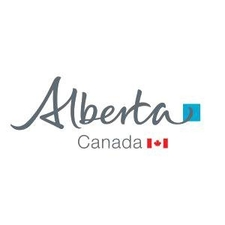Government of Alberta; Government of Alberta; Environment and Parks
Type of resources
Topics
Keywords
Contact for the resource
Provided by
Formats
Representation types
Update frequencies
status
-

This dataset contain the 1:20,000 scale contour elevation text converted from the Provincial Digital Base Mapping Project.
-

Sub-regional plans support working landscapes that provide economic opportunities and maintain healthy landscapes by outlining management approaches and requirements for development and human footprint restoration. These plans enable public lands to support the interests of all Albertans, including Indigenous peoples, for the present and into the future. The Cold Lake Sub-Regional Plan Spatial Data dataset contains spatial data that can be used for planning as described within the Cold Lake Sub-regional Plan (2022). The following datasets are available: Cold Lake Watercourse/Waterbody Setbacks, and Cold Lake Recreational Management Areas.
-

The Significant Landforms of Alberta dataset contains significant (provincially, nationally or internationally) geomorphic features within the province of Alberta, for distribution external to the Government of Alberta. These data have been assembled by Alberta Parks, in collaboration with the Alberta Geological Survey (AGS), with contributions from other subject matter experts in Alberta.
-

The Regulatory Assurance Division Region Boundaries dataset is comprised of all the polygons that represent the Environment and Protected Areas Regulatory Assurance Division Region Boundaries within the Province of Alberta. The dataset is to help Government of Alberta Staff in managing workloads within the North and South Regions of Regulatory Assurance Division.
-

The Alberta Human Footprint Monitoring Program (AHFMP) is collaboration between the following organizations: Alberta Environment and Parks (AEP) The Alberta Biodiversity Monitoring Institute (ABMI) Alberta Agriculture and Forestry (AAF) Alberta Energy Regulator (AER) Alberta Energy (AE) Various non-government organizations. The goal of the AHFMP is to improve the accuracy of the human footprint data and to focus expertise from the various organizations on a single footprint product. Currently AEP and ABMI co-lead the program. The AHFMP stratifies footprint features into footprint sublayers based on logical groupings. Roads, oil and gas well pads, rail lines, gravel pits, agriculture fields are examples of sub layers. Where possible, the AHFMP will obtain features for these sub layers directly from authoritative sources. In some of these cases the data authority are responsible for the distribution of the sub-layer. Only when the features are not available from an authoritative source will the AHFMP create their own data. When this occurs, the AHFMP will work with subject matter experts (SMEs) from various organizations to ensure the features are digitized and attributed correctly. AEP has completed the following sub-layers in collaboration with ABMI and Alberta Energy. These are available for public use: Oil and Gas Well Pads (conventional and in situ) for 2014 and 2016 Road verges, surfaces and centre lines for 2014 only. Pipeline verges and centre lines for 2016. Other sub-layers will be added as they are completed. ABMI is also working on numerous sub layers that are available on their website.
-

The location of visible, linear, man made features of importance pertinent to the business activities of the Government of Alberta.
-

The Registered Fur Management Area dataset is comprised of all the polygons that represent the Registered Fur Management Areas in Alberta. A Registered Fur Management Area (RFMA) is a parcel of public land, the boundary of which is described on the Registered Fur Management Licence. A Registered Fur Management Licence permits the licence holder to hunt and trap fur-bearing animals on the lands described on the licence.
-

The Base Features Access Railway spatial layer is the authoritative source of railway data for the province of Alberta. It is a part of the Access data collection which also includes roads, powerlines, cutlines and trails, and industrial facilities.
-

The Base Features Access Road spatial layer is the authoritative source of road data for the province of Alberta. It is a part of the Access data collection which also includes railways, powerlines, cutlines and trails, and industrial facilities.
-

This layer contains point representation of railway stations and bridges along the Alberta railway network.
 Arctic SDI catalogue
Arctic SDI catalogue